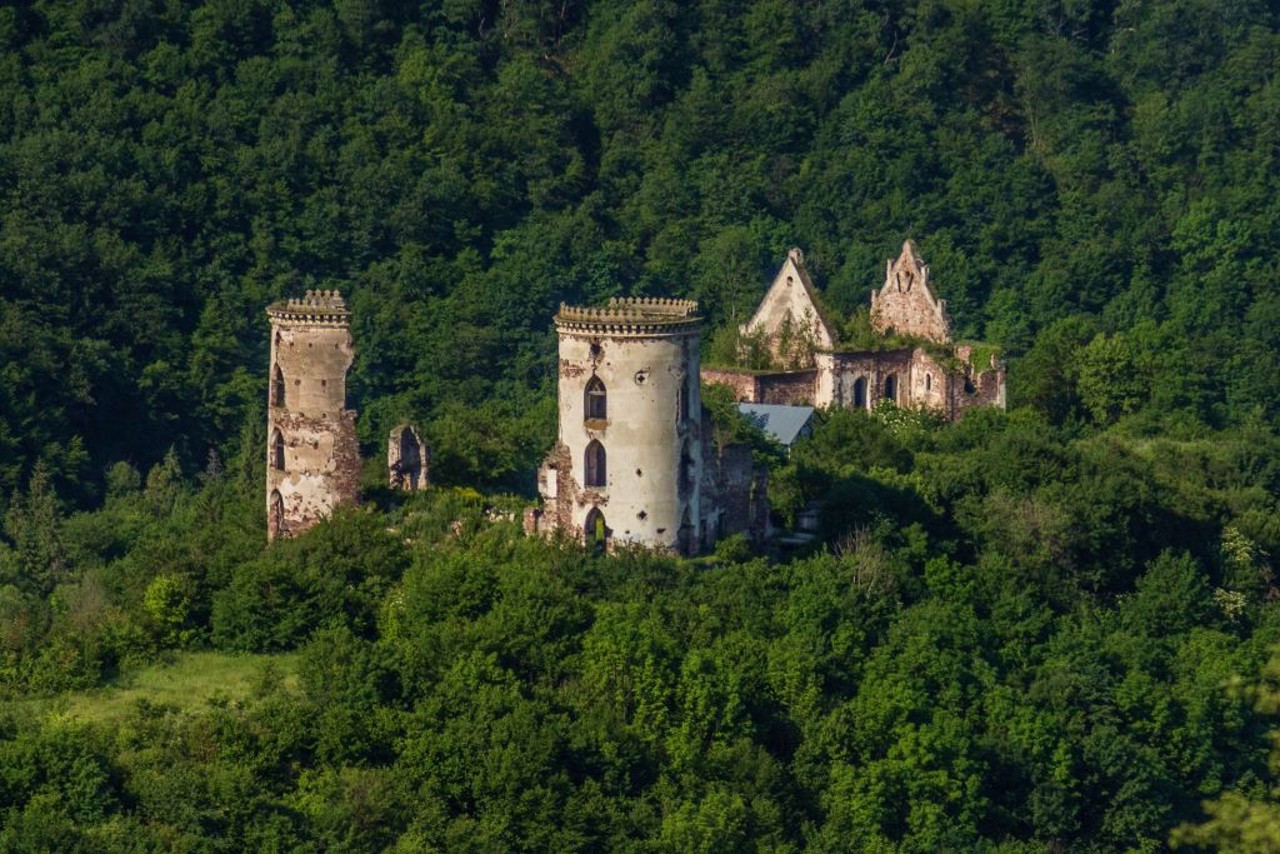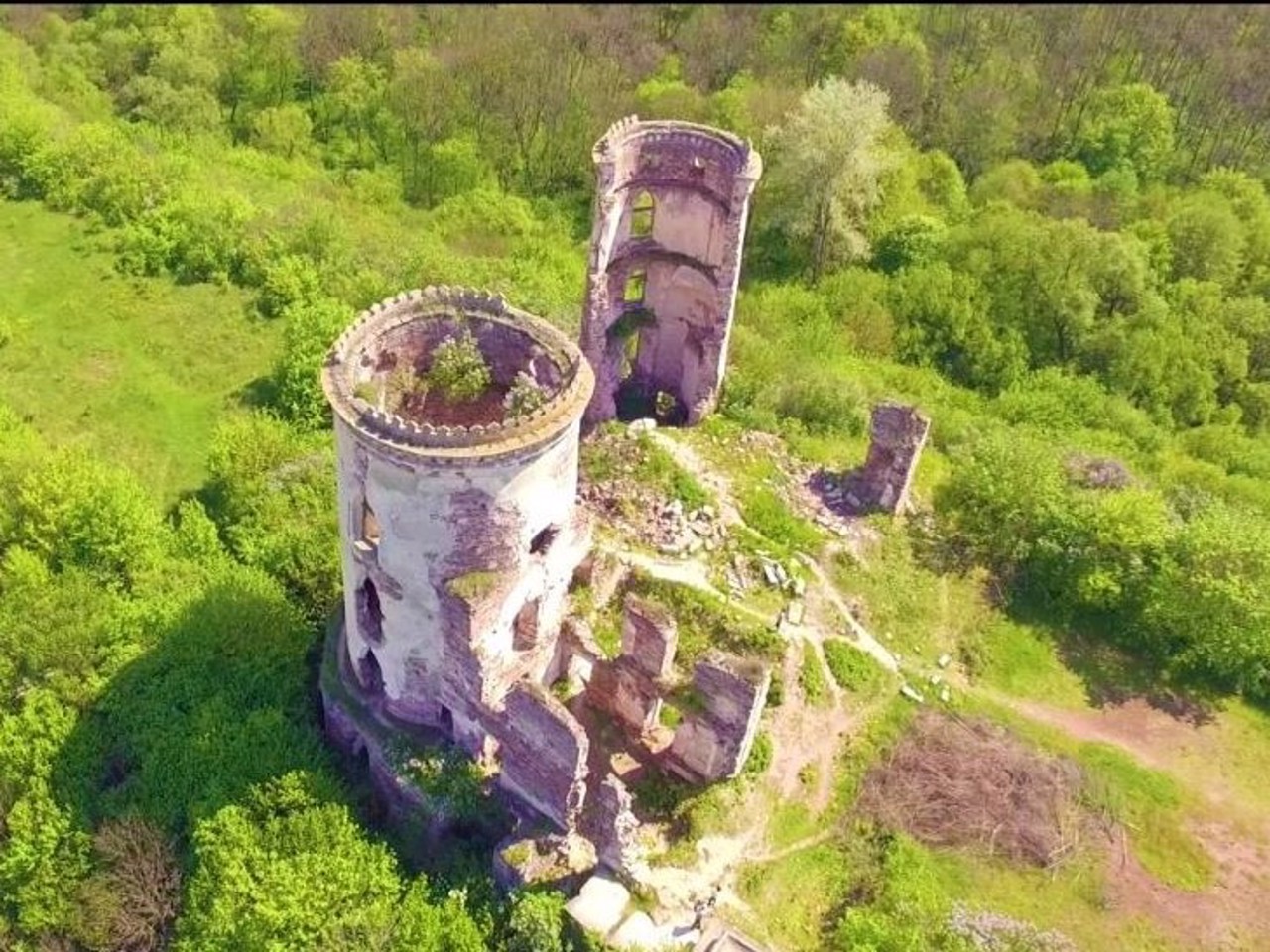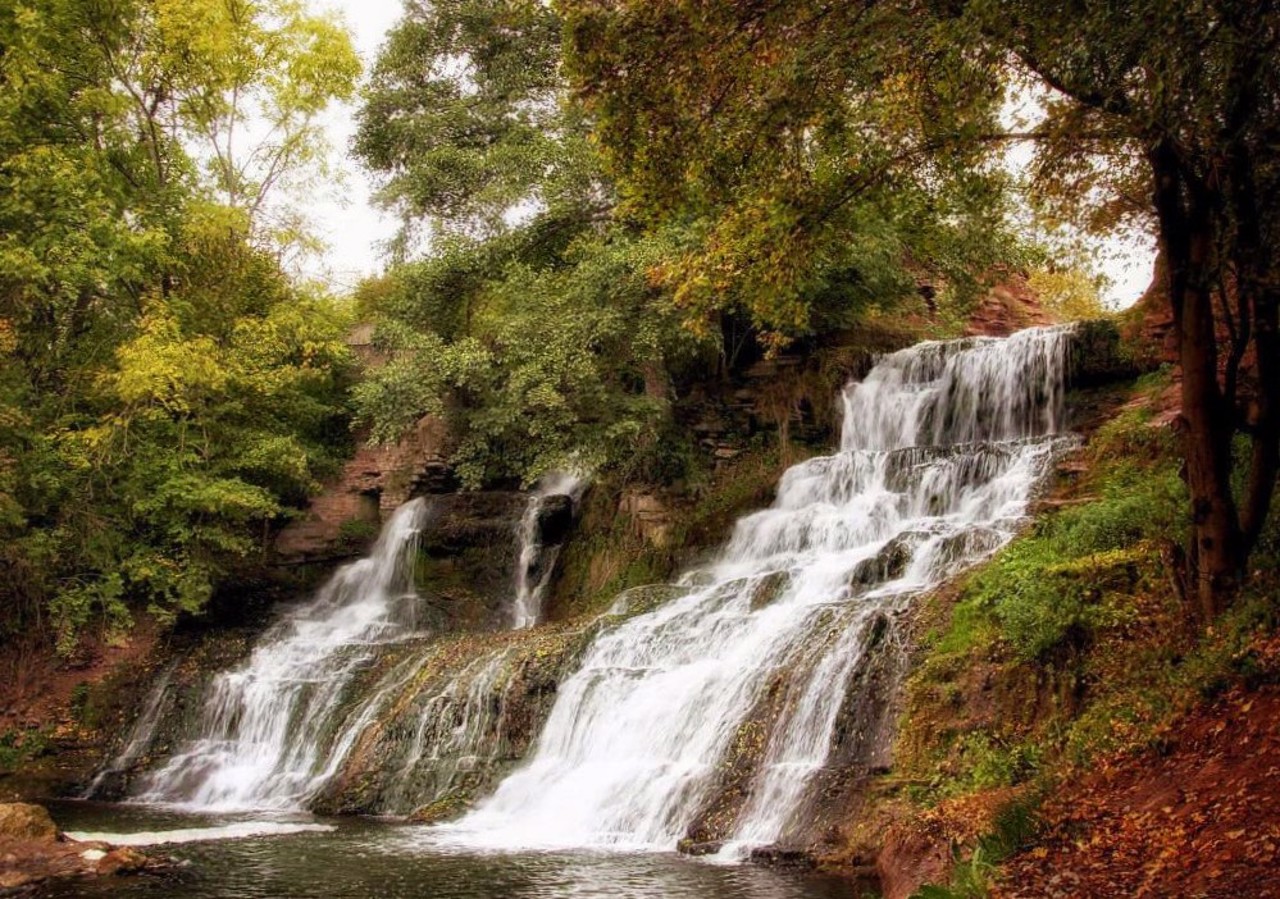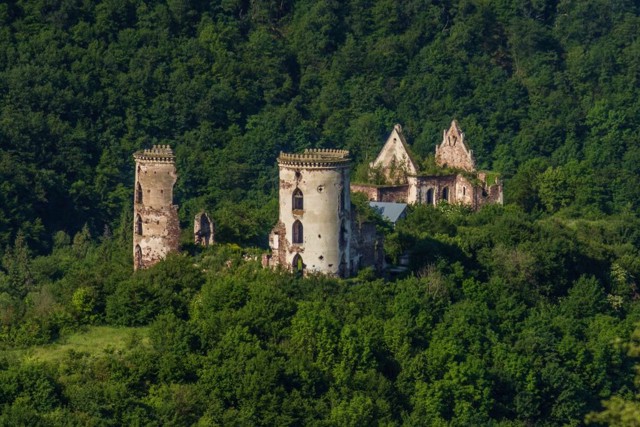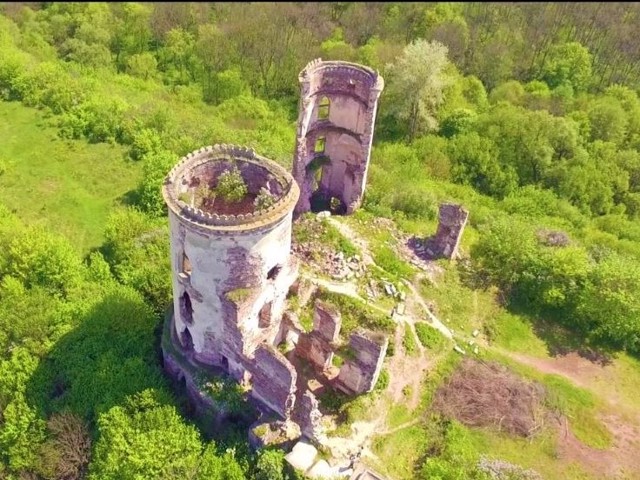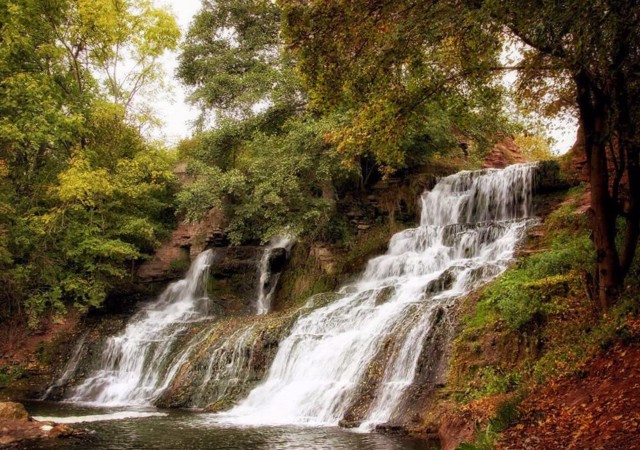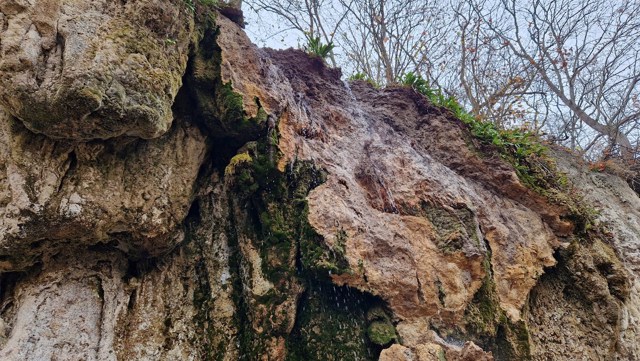Functional temporarily unavailable
General information about Nyrkiv
The small village of Nyrkiv on the Dzhuryn River has recently gained popularity among tourists who want to visit the nearby Chervonohorod (Chervonohrud, Chervonohrad).
This historical name is given to a huge basin with steep red slopes, at the bottom of which in the 9th century stood the Ancient Rus town of Cherlen, which is mentioned in the chronicles as Castrum Rubrum (Red Castle). In the 12th century, the Mongol-Tatars destroyed the wooden fortress.
Since 1351, Chervonohorod belonged to the Lithuanian princes Koriatovych (Koryatovych), who built a new wooden castle on the bend of the Dzhuryn River. In 1448, the city received Magdeburg rights. A century and a half later, Mykolay Danylovych rebuilt a stone castle, but frequent attacks by Turks, Volochs and Tatars soon turne ...
The small village of Nyrkiv on the Dzhuryn River has recently gained popularity among tourists who want to visit the nearby Chervonohorod (Chervonohrud, Chervonohrad).
This historical name is given to a huge basin with steep red slopes, at the bottom of which in the 9th century stood the Ancient Rus town of Cherlen, which is mentioned in the chronicles as Castrum Rubrum (Red Castle). In the 12th century, the Mongol-Tatars destroyed the wooden fortress.
Since 1351, Chervonohorod belonged to the Lithuanian princes Koriatovych (Koryatovych), who built a new wooden castle on the bend of the Dzhuryn River. In 1448, the city received Magdeburg rights. A century and a half later, Mykolay Danylovych rebuilt a stone castle, but frequent attacks by Turks, Volochs and Tatars soon turned the prosperous city into a village.
The mighty Dzhuryn waterfall (Chervonohorod waterfall), which roars near the castle, has an artificial origin: according to legend, the Turks blew up a stone ridge during the siege in order to change the course of the river, which used to go around the castle.
In 1820, Chervonohorod became the residence of Prince Karol Poninskyi. Defensive towers served as the basis for a luxurious palace in the Gothic style. After the First World War, the manor fell into disrepair, and soon Chervonohorod ceased to exist as a settlement (only the village of Nyrkiv is marked on maps), but it still attracts tourists with its unique combination of wonderful nature and majestic ruins.
Невелике село Нирків на річці Джурин останнім часом набуло розголосу серед туристів, які прагнуть відвідати розташований поруч Червоногород (Червоногруд, Червоноград).
Цю історичну назва носить величезна улоговина з крутими схилами червоного кольору, на дні якої в IX столітті стояло давньоруське Черлене місто, яке згадується в хроніках як Castrum Rubrum (Червоний замок). У XII столітті монголо-татари зруйнували дерев'яну фортецю.
З 1351 року Червоногород належав литовським князям Коріатовичам (Корятовичам), які побудували на вигині річки Джурин новий дерев'яний замок. У 1448 році місто отримало Магдебурзьке право. Через півтора століття Миколаєм Даниловичем був відбудований кам'яний замок, але часті напади турків, волохів і татар незабаром перетворили процвітаюче ...
Невелике село Нирків на річці Джурин останнім часом набуло розголосу серед туристів, які прагнуть відвідати розташований поруч Червоногород (Червоногруд, Червоноград).
Цю історичну назва носить величезна улоговина з крутими схилами червоного кольору, на дні якої в IX столітті стояло давньоруське Черлене місто, яке згадується в хроніках як Castrum Rubrum (Червоний замок). У XII столітті монголо-татари зруйнували дерев'яну фортецю.
З 1351 року Червоногород належав литовським князям Коріатовичам (Корятовичам), які побудували на вигині річки Джурин новий дерев'яний замок. У 1448 році місто отримало Магдебурзьке право. Через півтора століття Миколаєм Даниловичем був відбудований кам'яний замок, але часті напади турків, волохів і татар незабаром перетворили процвітаюче місто в село.
Потужний водоспад Джурин (Червоногородський водоспад), який гуде поруч із замком, має штучне походження: за легендою, турки під час облоги підірвали кам'яний кряж, щоб змінити русло річки, яка раніше обгинала замок.
У 1820 році Червоногород стає резиденцією князя Кароля Понінського. Оборонні вежі послужили основою для розкішного палацу в готичному стилі. Після Першої світової війни садиба занепала, і незабаром Червоногород як населений пункт припинив існування (на картах позначено лише село Нирків), проте до цих пір він приваблює туристів унікальним поєднанням чудової природи і величних руїн.
Сплануй своє перебування у Nyrkiv
What to see and where to go in Nyrkiv
Tourist attractions and museums of Nyrkiv
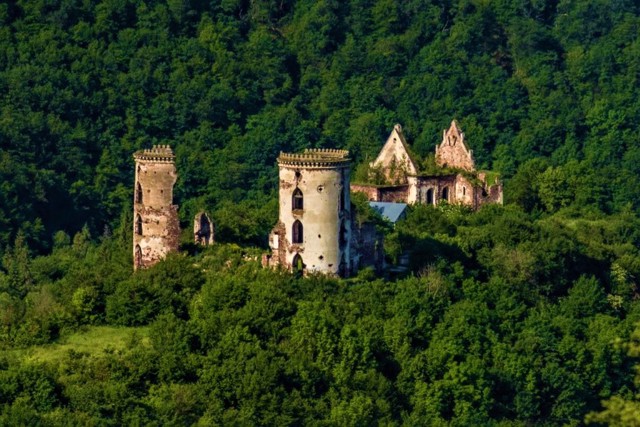
Chervonohorod Castle
Castle / fortress
Two round Gothic crenellated towers at the bottom of the giant crater are the remains of the ancient Chervonohorod Castle, the history of which dates back to the 9th century, when there was an ancient Rus settlement called Chorlene Mistechko (later it was called Chervonohorod, Chervonohrud, Chervonohrad).
In 1351, the Rus-Lithuanian princes Koriatovychi (Koryatovychi) built a wooden castle in Chervonohorod for protection from the Tatars. At the beginning of the 17th century, the royal elder Mykola Danylovych built a new stone castle at the bend of the Dzhuryn River, which was later destroyed by the Turks. The picturesque ruins served as the basis for Prince Karol Poninsky to build a magnificent Gothic palace in 1870 (architect Yulian Zakharevych).
The estate in Chervonohorod was considered one of the most elegant tycoon residences in Poland. Until 1939, Princess Lyubomyrska lived in the Chervonohorod castle.
By the middle of the 20th century, the estate fell into disrepair, during the Soviet rule, most of the buildings were dismantled for building materials. Nearby you can see the ruins of the Peter and Paul Church of the XVII-XVIII centuries, the abandoned cemetery with the Poninsky tomb, as well as the remains of the hydroelectric station near the Dzhuryn waterfall.
Descent into the canyon to Chervonohorod Castle - 2.5 kilometers of rather steep ground, which in bad weather can be difficult for cars to pass. Entrance to the territory of the tract is paid.
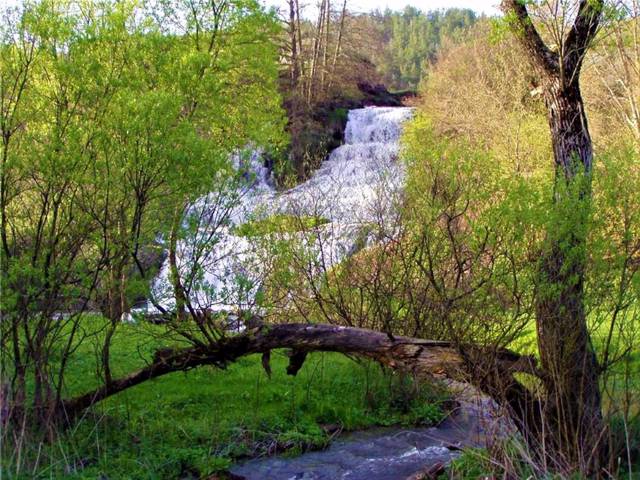
Dzhurynskyi waterfall
Natural object
Dzhurynskyi (Chervonohorodskyi, Chervonogradskyi) waterfall near the village of Nyrkiv is the largest plain waterfall in Ukraine (height - 16 meters).
It is located in the Chervone tract, next to the picturesque ruins of Chervonohorodskyi (Chervonohradskyi) castle, on the territory of the Dniester Canyon National Nature Park.
According to legend, the Dzhurynskyi waterfall is of artificial origin. In 1620, Turks and Tatars, breaking through to an impregnable castle surrounded by water, destroyed a stone ridge and changed the course of the river so that it passed by the castle.
According to another version, the channel was changed during the construction of the Poninsky Palace in the 18th century.
On the rocky shores of Dzhurynskyi Waterfall, you can see the ruins of a water mill that existed in the past. This is a popular summer vacation spot for Ternopil residents. Gazebos and tent sites are available for rent.

Waterfall "Maiden's Tears" (Hermit's Сave)
Natural object
The complex nature monument of local importance "Pustelnia Tract" with the waterfall "Maiden's Tears" and the grotto "Hermit's Cave" is located 1.5 kilometers south of Nyrkiv. This is one of the objects of the National Nature Park "Dniester Canyon".
A small grotto is carved out of the travertine rock above the Dzhuryn River. Before the Second World War (according to other sources, at the end of the 19th century), a hermit monk lived in the cave, who was engaged in stone carving. A statue of Saint Onuphrius, carved by a hermit, has been partially preserved.
Part of the cave was destroyed by a landslide.
Three statues of the Mother of God are installed above the spring at the approach to the hermit's cave. The waters of the spring flow down from the rock in thin streams of the "Maiden's Tears" waterfall, around which a special microclimate with unusual vegetation has formed. In 2024, the waterfall suffered from a travertine rock collapse.
The ascent to the "Pustelnia Tract" from Dzhurynskyi Waterfall takes about half an hour. Car access is possible from the side of Ustechko village.
Nyrkiv on photo and video
Nyrkiv in news and blogs
Reviews Nyrkiv
Geographical information about Nyrkiv
| {{itemKey}} | {{itemValue}} |
|---|---|
| Region |
Ternopil |
